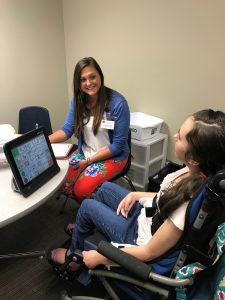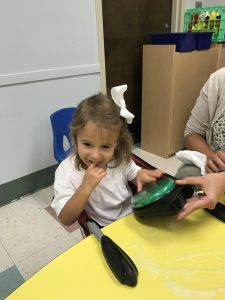 Goal
Goal
The goal of the Augmentative/Alternative Communication (AAC) Program at the University of Alabama Speech and Hearing Center is to provide opportunities for individuals with complex communication needs to enhance their communication through the use of AAC.
What is AAC?
The American Speech-Language-Hearing Association Special Interest Division 12 defines AAC as follows:
Augmentative and alternative communication (AAC) refers to an area of research, as well as clinical and educational practice. AAC involves attempts to study and when necessary compensate for temporary or permanent impairments, activity limitations, and participation restrictions of individuals with severe disorders of speech-language production and/or comprehension, including spoken and written modes of communication. (2005, p.1)
Why Use AAC?
AAC allows individuals to efficiently and effectively engage in a variety of interactions and participate in activities of their choice. Since all individuals have the right to communicate, there is no eligibility or prerequisite skills for the use of AAC. AAC is a mode of communication and is combined with other individualized and evidence-based language approaches that have been proven effective.
 About AAC Evaluations
About AAC Evaluations
We complete formal and comprehensive AAC assessments to determine which system is most beneficial. At least three AAC systems are used during an assessment during the individual’s most motivating activities. Individualized recommendations are regarding the communication system that best fits the individual’s needs. Accessories such as keyguards and tablet cases may be recommended, if necessary. Funding packets are completed for private insurance, Alabama Medicaid, and/or Medicare as necessary.
References
American Speech-Language-Hearing Association (ASHA) (2005). Roles and responsibilities of speech-language pathologists with respect to augmentative and alternative communication: Position statement
Resources